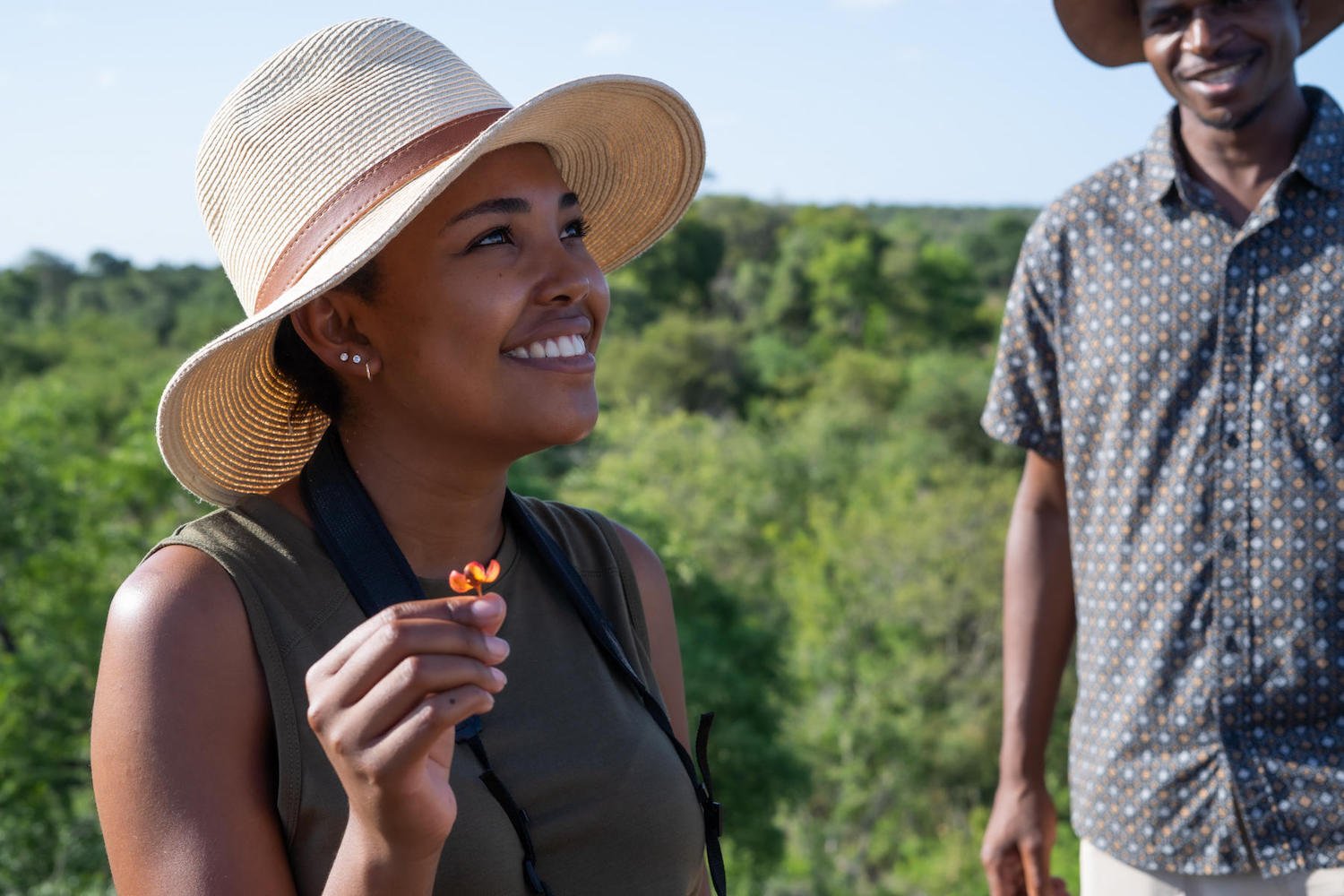WHAT TO PACK FOR YOUR GREEN SEASON SAFARI
Green season (also known as low season, off season or the emerald season) is synonymous with summer across Africa’s safari destinations. From the Serengeti to Kruger, Victoria Falls to the Masai Mara, summer rains from about November to around April bring fresh grazing, restore water sources and replenish life. Essentially, the dry, brown vegetation of peak, high or dry season transforms into verdant greenery. The change in weather means a change in wardrobe.

What’s covered in this guide
Explore the highlights of this post with ease by using the table of contents below to navigate to sections of interest.
Dress for the Daytime Heat
The key thing to bear in mind as you pack is average temperatures. Across most regions, nighttime temperatures seldom dip below about 15°C / 60°F while daytime temperatures can get to 40°C / 105°F but are generally around 30°C / 86°F.
This means you should pack:
- Lightweight fabrics in natural fibres like cotton
- A swimming costume (many upscale lodges now have private plunge pools)
- Shorts or a summer dress to wear for lunch
- A sarong or kikoi (if you are staying in a lodge without air conditioning or an Evening Breeze system, an old safari trick to cool down is to sleep under a damp sarong)
- Sunscreen
- Sunglasses
- A hat or cap
- Sandals for around the lodge
Aim for earth tones like greens, greys, browns and khakis already in your wardrobe.

What the ‘Rainy Season’ Means
Across most safari areas, rainfall often occurs as a short-lived cloudburst in the late afternoon, sometimes accompanied by thunder. In parts of East Africa, rain is so ‘localised’ that you can drive around showers and avoid getting wet.
Rain is welcome because it cools temperatures down, rinses the air of dust and brings sustenance to crops, savannahs, forests and wildlife. Late afternoon or overnight rain is more common than morning rain so activities needn’t be compromised too much.
To cope well, consider packing:
- A lightweight waterproof jacket
- Closed waterproof shoes
How to Dress to Deter Mosquitoes
‘Mozzies’ are a fact of life on a Green Season safari. They breed in a combination of heat and water. While annoying, they provide crucial food for birds, bats, frogs, fish, geckos and so on. They are most active from sunset to sunrise. Follow the lead of safari guides and consider packing:
- Long-sleeved shirts
- Trousers
- Insect repellent
- Thin socks (mozzies love the thin skin around ankles!)
- No black or blue colours as they seem to be attracted to these colours
When you return from your afternoon game drive, have a quick shower or swim (being covered in dust makes you feel hotter) and change into lightweight cotton trousers and a shirt for dinner. The more exposed skin you have, the higher your chances of being bitten so use organic insect repellent on ankles, hands and necks.

Respect Cultural Norms
PHOTO CREDITS Singita Sasakwa, Singita Lebombo and Asilia Roho Ya Selous








